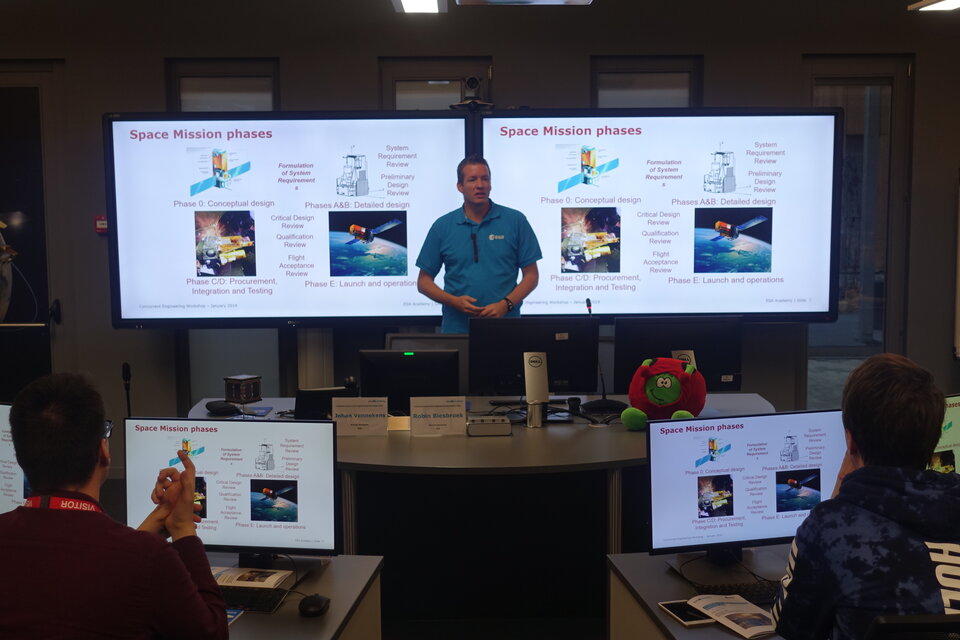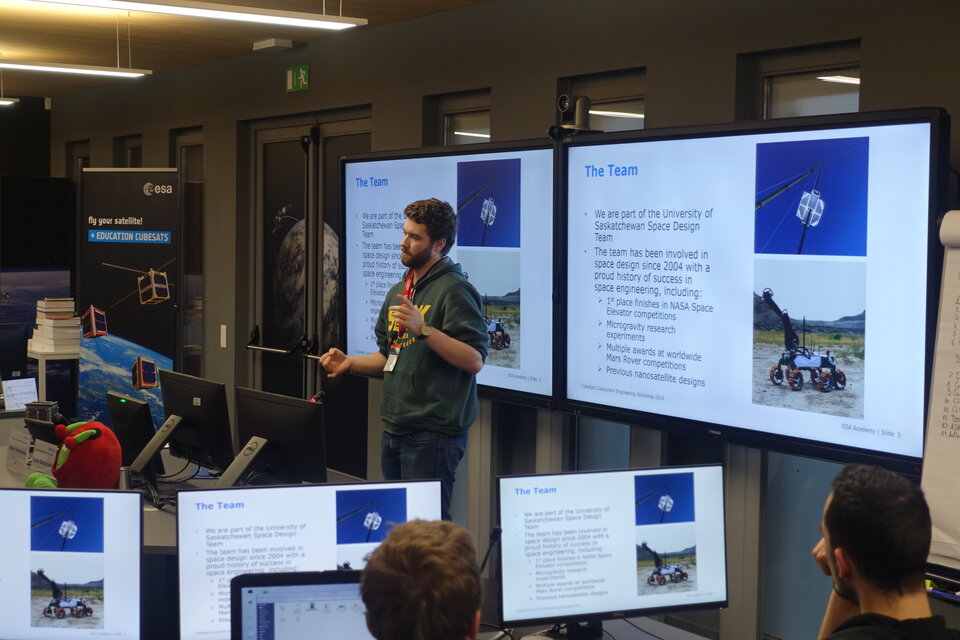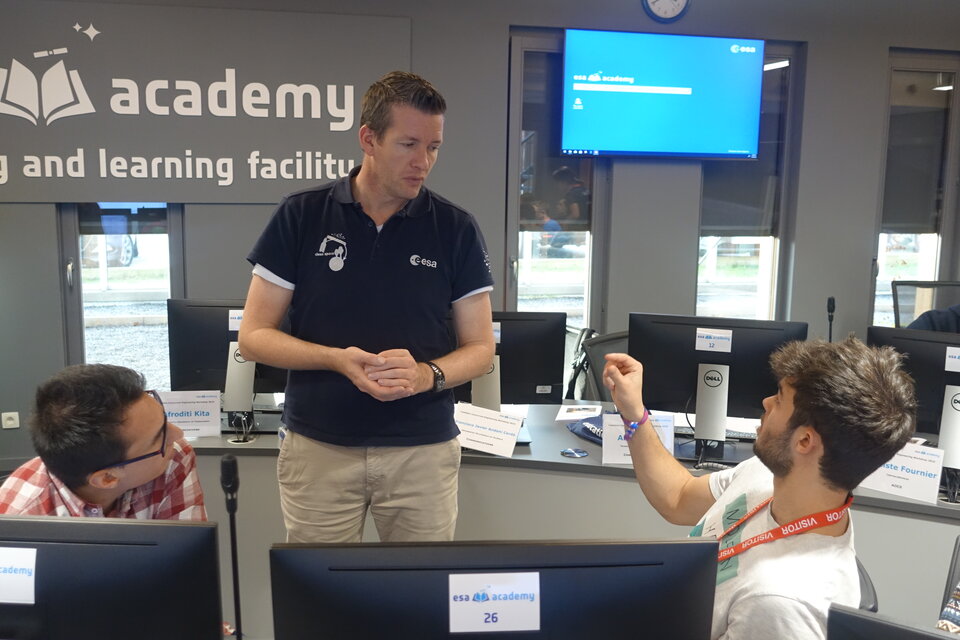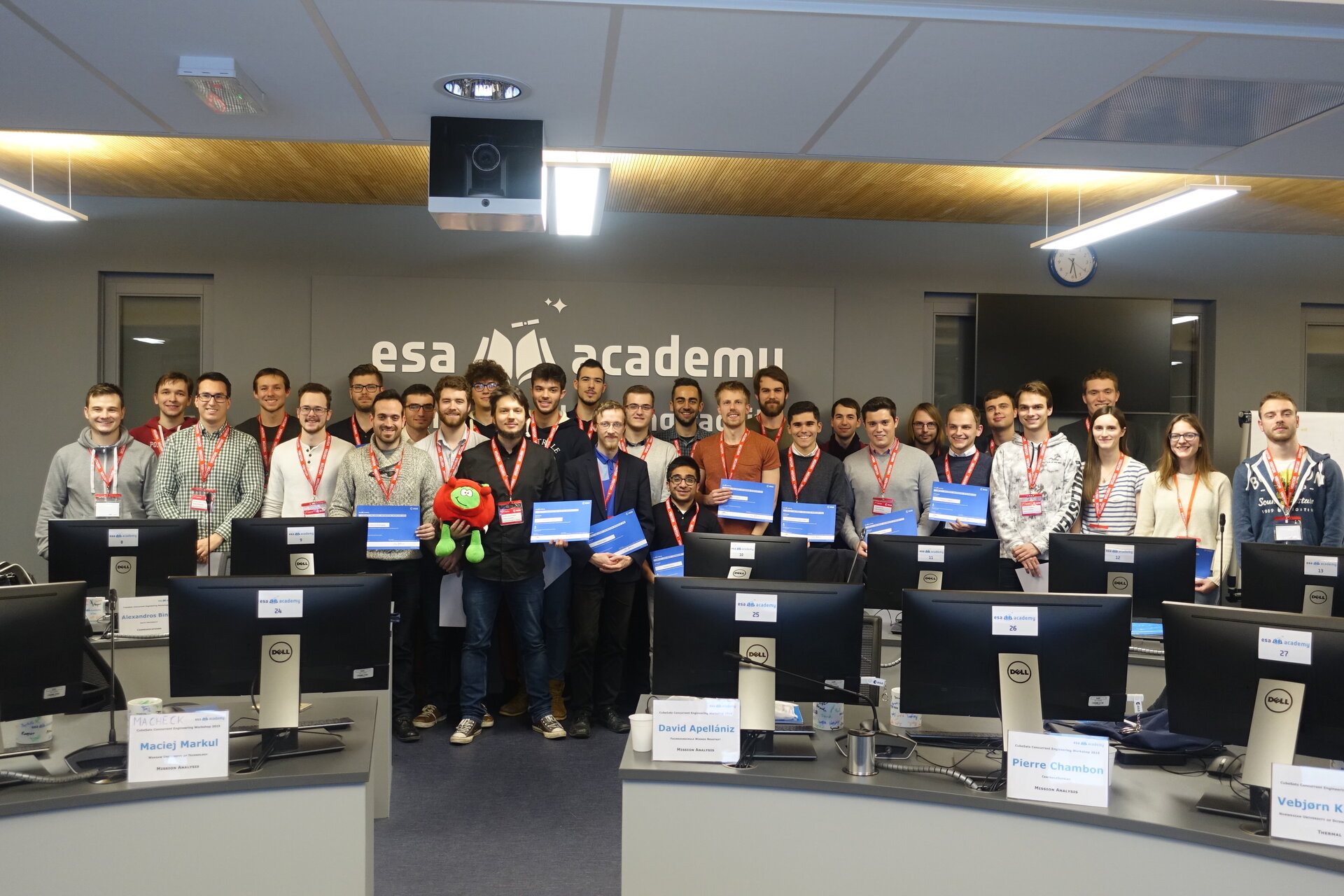Apply now for ESA Academy's CubeSat Concurrent Engineering Workshop 2023
ESA’s Education Office is looking for 30 talented and motivated university students with an engineering or physics background from ESA Member States, Canada, Latvia, Lithuania, Malta, Slovakia and Slovenia to participate in the fourth edition of ESA Academy’s Concurrent Engineering Workshop dedicated to CubeSats. The 4-day Workshop will be organised between 14 and 17 February 2023 at the ESA Academy’s Training and Learning Facility in ESEC-Galaxia, Belgium.
Concurrent engineering is a method of designing and developing products for the space sector. Contrary to traditional design methods, in concurrent engineering all subsystems are designed simultaneously. This is a far more efficient way of working but comes with its own unique challenge: solutions in one area that could impact the design of another subsystem must be instantly identified and communicated between teams. Although concurrent engineering is a more complicated process to begin with, in effect it allows mistakes to be identified – and rectified – earlier, therefore reducing the overall design time.

ESA’s main Concurrent Design Facility (CDF) is located at ESA’s technology centre (ESTEC) in the Netherlands. However, within the framework of the ESA Academy programme, ESA has developed a similar facility exclusively for educational purposes, which is located at ESA’s European Space Security and Education Centre (ESEC)-Galaxia in Transinne, Belgium. Access to this facility during the workshop complements what student teams are learning at university by familiarising them with the concurrent engineering approach for designing a CubeSat mission.
This Workshop can help to better prepare the student teams that are planning to embark on a CubeSat project or are at the early stages of one. Teams wishing to participate should not be at an advanced stage in their CubeSat project. They should be either at a conceptual or preliminary phase of their CubeSat design. During the Workshop they will get the opportunity to present their CubeSat project to the other students and experts. Complementary lectures will also be offered to become acquainted with ESA’s Fly Your Satellite! (FYS) programme as well as ESA good practices. Participation in this Workshop may therefore be an excellent starting point for a possible future application to the FYS programme.
Workshop content

Guided by ESA systems engineers, the students will learn about concurrent engineering and its benefits, gaining first-hand experience with the Concurrent Model-based Engineering Tool (COMET) and identifying design drivers.
Students will be given mission requirements and constraints, then use concurrent engineering to create a CubeSat mission design.
Students will be divided into groups, and will be assigned to the following disciplines:
- Payload
- Configuration
- Structures and Mechanisms
- Propulsion
- Power
- Thermal
- Attitude and Orbital Control Systems (AOCS)
- Trajectory analysis
- Communications
- Data handling
Within their groups, students will create a subsystem concept in order to achieve their given mission using concurrent engineering. They will start with a first iteration of all the subsystems along with a budget that they will have to review and present. A second iteration will then be completed according to the identified function tree and product tree, and, in the end, the mission design will be finalised and presented by the students.
The week before the workshop, the selected students will follow a 2h COMET tutorial to allow them to become familiar with the tool.
Preliminary schedule
During the Workshop, the following topics will be covered:
- Introduction to Concurrent Engineering and Requirements Management
- Get familiar with Calculation Sheets and Concurrent Model-based Engineering Tool (COMET)
- Introduction to the CubeSat Mission
- Student team CubeSat projects presentations
- Lectures about
- CubeSat Architectures
- CubeSat reliability
- Concurrent Engineering iterations
- Introduction to ESA, ESA Education and the Fly Your Satellite! Programme
- Visit of ESEC-Redu
- Final Student Presentations
Who can apply?
Preferred teams are those that are considering to start, or have recently started a university CubeSat project, and/or those teams interested in applying Concurrent Engineering methodologies to their CubeSat design.
CubeSat teams must comply with the following requirements:
- the CubeSat team must be from a University based in an ESA Member States, Canada, Latvia, Lithuania, Malta, Slovakia, and Slovenia;
- at least 4 university students are participating in the project;
- the project is educational.
In order to participate, all team members must fulfil the following eligibility criteria at the time of application:
- aged minimum 18 years old. ESA Academy and relevant partners will only appraise applications from students who have no or limited professional experience in relevant scientific, engineering or other space-related topics;
- be a citizen of an ESA - ESA Member States, Canada, Latvia, Lithuania, Malta, Slovakia, and Slovenia;
- be enrolled as a 3rd / 4th year Bachelor, Master or PhD student in a university at the time of the Workshop (not graduating before the workshop);
- be studying an engineering subject or physics.
ESA will cover the cost of accommodation and meals as well as up to 300 euros for travelling to Belgium, for each selected student.
How to apply

An overview of the CubeSat project shall be submitted by the team leader (e.g. university professor or academic leading the team). Students within each team shall submit their individual application as well.
Note that only a limited number of students from each team will be invited to attend the Workshop. For student selection within each team, several factors will be taken into consideration, such as the overall balance of disciplines during the concurrent engineering work and the educational return for the team. Team members are not allowed to apply via multiple teams and only one proposal per university faculty or department can be considered.
Team leader only:
- Download the CubeSat Project Overview Template and fill it out;
- Send it to tlp@esa.int (PDF, maximum 8 pages). The subject of the email and the file name should be in the format ‘CCEW2023 – CubeSat Project Overview – (Name of the team)’.
All team members:
- Fill in the online application form:
- Provide CubeSat team name;
- Select preferred disciplines;
- Upload a motivation letter (PDF, maximum 1 page, no images);
- Upload a CV (Europass format, PDF, maximum 2 pages, no images);
- Upload a formal recommendation letter (PDF, maximum 1 page, including signature, no images) from a university professor or academic supervisor of current university;
- Upload a copy of academic records (PDF).
All answers and documents should be in English (except academic records if not available).
The deadline for applications is 18 January 2023, 23:59 CET.
For more information, please contact tlp@esa.int


